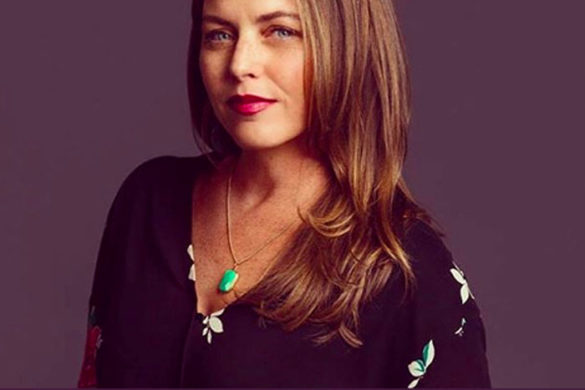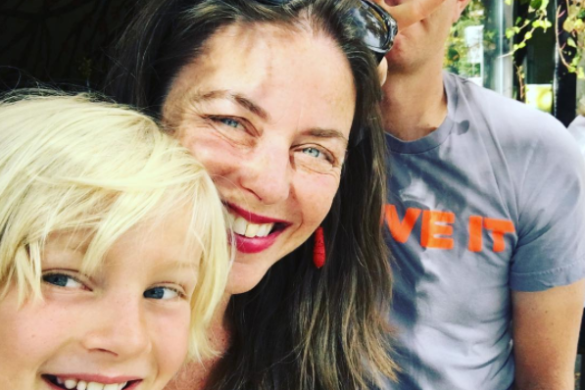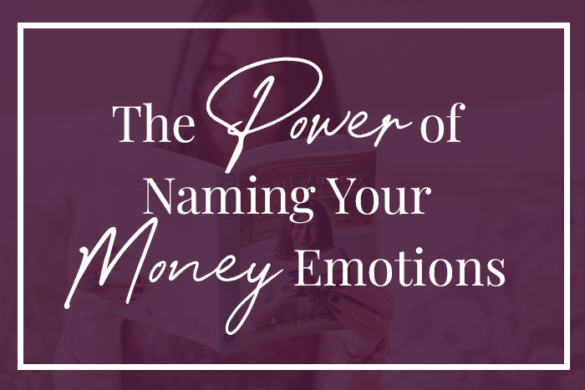The hardwood floor cradled my body as it curled into itself. I could see the night lights of Chicago reflected in the varnish, glittering and strobing, as a cool breeze billowed through soft curtains.
I was 23 years old, and I had just learned something that utterly blew my mind. It would forever change the course of my life. In some ways, it saved my life.
I rocked my body softly. Waves of grief moved through me (how could I not have known this?), and then waves of laughter, relief, and hope (now I know, and nothing will ever be the same).
The revelation had come thanks to my Authentic Movement group that day. I was in a liminal space, studying Authentic Movement in my hometown of Chicago for a few months before heading off to my graduate program in somatic psychology at Naropa University.
The year before, while jogging on a kibbutz in Israel, the idea to merge dance and therapy had appeared to me in a flash — and in the enthusiasm and naïveté of my early twenties, I thought I had created the field of dance therapy. I was shocked and thrilled to learn that, not only did this field already exist, but I could study it — with real masters.
I had learned long ago that I could rely on my body to help me process my emotions — especially those emotions that felt so huge and overwhelming, I didn’t even want to touch them. As a teenager, I would retreat to my room and “dance out” my angst and sadness and all those big, confusing feelings to Madonna and The Cure. I’d always emerge feeling more connected to myself, understanding better what I was feeling, what I wanted to say, what I wanted to do.
Feeling and moving my body had helped me process and deeply grieve the death of my boyfriend the year before those Authentic Movement classes in Chicago. Feeling my body had given me clarity about next steps in my education. It had led me home, to Chicago. Home, to those Authentic Movement classes, Home, to myself.
I was learning to listen — really listen — to my body. It wasn’t easy. I was so intent on showing my Authentic Movement teacher that I could “do it right,” I would stretch and move my body like a dancer in our classes. “Start again,” she would say, gently, each time. The goal of Authentic Movement wasn’t to look pretty or follow some choreography; it was to slow way down, listen to your body, and follow the sensations and instincts into movement. It was self-expression at its most raw and vulnerable. And it was rocking my world.
I was learning to listen to what my body was telling me. I was realizing: this had been a huge missing piece of my education — fundamental knowledge that should have been included in How to Be a Human 101. I was learning to sift through what I thought about what I felt and get down to what I really felt. It was edgy. It turned me alive. And that night, curled up on that hardwood floor in Chicago, this practice had taught me one of the most profound, simple truths I had ever tasted:
I could feel — in my body — when I was full and when I was hungry.
Oh, it was so simple. But oh, was it profound! For a young woman who had always struggled with food and body image, knowing that I could trust my body’s messages about hunger and fullness — knowing that, at any time, I could feel this truth — deeply healing. My body had always known when I was hungry and when I was full. But I had overridden its messages, blocked them, confused them for many years. I had replaced my own body’s messages with the cultural messages about food and what young women should eat and look like.
This insight changed much more than my relationship with food. That night, curled into a ball on that hardwood floor, I learned the power of listening to my body. I learned just how wise my body was — and how wise I would be, to listen to it.
Knowing how to listen to my body’s wisdom was a huge missing piece of my education — of all our our educations. How could I be the woman I wanted to be — vital and whole — without understanding and honoring the voice of my body?
That night in Chicago was a turning point, for me. Yes, I would slip and stumble in the following years (into a bowl of pasta I didn’t truly want, or overriding my body’s clear NO for a mastermind group that just didn’t feel right). But understanding and honoring the body’s messages quickly became a cornerstone of my life — and the work I wanted to share with the world.
Tuning into my body has been life-saving and life-giving, for me.
I spent my twenties steeped in my Masters in Dance-Movement/Somatic Psychology. I’m so grateful that I got to study at Naropa University with such greats as Christine Caldwell, Janice Beard Bull, and Susan Aposhyan. Those years gave me the foundational training and tools that I would come to rely on for the rest of my life, in every aspect of my life: my parenting, my marriage, how I grow my business … and, yes, how I relate to money.
Back in my twenties, though, money wasn’t on my radar. Not in my own life, and certainly not as something I felt called to guide people through. It would take several more years for me to realize that this, too, was a huge missing piece in my education — in all of our educations.
Once I realized that I was called to shine a light on our relationship to money, I knew I had to bring every tool I had to this work: my sensitivity, my playfulness, my sense of ritual, deep forgiveness … and certainly, certainly my respect for our body’s wisdom.
If you really want to explore and transform your money relationship, you must include your body.
Learning to change your behaviors with money? Great.
Learning to shift your beliefs and attitudes about money? Awesome stuff.
But it’s not just your head that has a relationship with money. It’s your whole self. Including your body. So if you want to understand and transform your money relationship? You must include your body.
Here are a few reasons why bringing the body into deep money work is wonderful … and downright practical:
1. Money is connected to some primal, fundamental themes, like our sense of safety, food/shelter/clothing. We don’t just think these feelings with our minds or feel them with our hearts … we feel safety and scarcity, in our bodies.
These themes and emotions will likely arise, at some point, in your money journey. By tuning into the body, you can hear them, understand them, and work with them far more directly than simply thinking about them.
2. The body shares a wealth of information with us. When working on your money relationship, you can gather clues from a number of sources: you can learn the language of money, you can research what beliefs your parents and culture bequeathed you about money, you can track your income and expenses, and on and on … The more clues you have to inform your understanding of money and your relationship to it, the better.
That’s why I encourage you to become aware of how you relate to money, on practical, emotional, mental, and spiritual levels. Don’t bypass your body as you gather clues. It has a lot to say!
3. Your body lives in the present moment. Want to be more mindful, more conscious, more aware, with your money work? This is all about becoming more present and noticing what’s happening in the moment. But this can be challenging, right? Well, good news: your body lives in the present moment. By tuning into your breath or your bodily sensations, you are auto-magically plugged into the present moment. And it’s only here, now, that you can make a new choice.
4. Awareness comes first. Then understanding. Finally, change. All change starts with awareness. How can you shift where you spend your money, if you don’t know where you’re already spending it? (This is why I always recommend people track their income and expenses for a few months before trying to change anything about them.)
Likewise, how can you shift your emotions and feelings and thoughts and sensations about money if you don’t know what they are? How can you know if your spending, saving, and giving are aligned with your values if you’re not first aware of how these transactions feel, in your heart and in your body?
If you want to change your relationship with money, you must first become aware of what your relationship already is like. And the best way I know how to do that? The Body Check-In.
If I could give everyone just one practice to change their money relationship, it would be the Body Check-In.
This is a deceptively simple way to tune into your body and bring some somatic awareness into your daily life — whether it’s when you’re making a deposit at the bank counter, paying bills online, talking to your honey, or gearing up to ask for that raise.
When practiced regularly, the Body Check-In is utterly life-changing. Every so often, I poll my Art of Money members about their favorite practices. Hands down, the most common and enthusiastic response about what’s really changed people’s money relationships? The Body Check-In. It works, people. But you don’t have to stop there …
Truth? Most of my deep money work is actually my way of waking people up to body-centered mindfulness.
Wonder why I always suggest a nibble of dark chocolate on your Money Dates? It’s more than just delicious. From a body-based wisdom perspective, this is actually a small way of practicing what’s called “Resourcing,” which is a way to increase a sense of safety and well-being during challenging moments.
Already have a body-based practice? (Like yoga, t’ai chi, hiking, or dance.) Great! You get it, then. Bring this somatic awareness into your money relationship and just watch how it deepens and expands.
Don’t have a body-based practice? Awesome! You’re in for a treat.
Start paying attention to your body within your money work. It’s a fabulous place to start! You’ll probably notice your newfound awareness rippling out into every area of your life, too.
It’s hard for me to tell stories about bringing body-based wisdom to my money — or anywhere else in my life. It has become so second-nature to me, I do it just as I breathe.
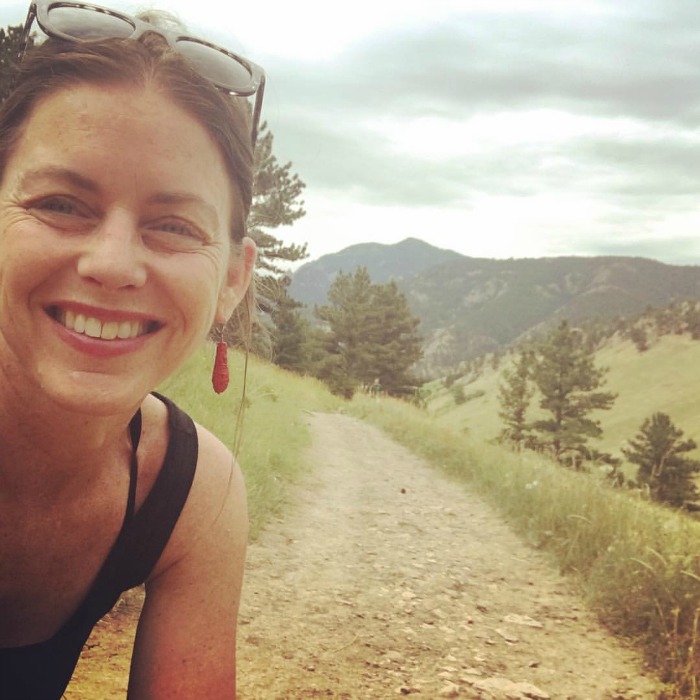
Here are some things I’ve learned in 26 years of working deeply with my body … that I hope support you:
- Listening to our bodies grows our capacity to feel emotions. All of them. The good and the bad. Or, rather: the full spectrum of sensation, from grief to joy, anger to excitement. We all “do” some parts of the feeling spectrum better than other parts. Tuning into our bodies helps us feel the whole spectrum, better — and gather the messages it’s sending.
- Sometimes, you just name what is. And that’s a relief. Last week, when I tuned into my body, I noticed: I’m in the messy, challenging part of my book tour. Simply by naming this, I felt better.
- Sometimes, you’ll discover one tiny (or huge) thing you can do to feel more comfortable.
- But sometimes it’s just about accepting what is. We don’t (we can’t) always change bad feelings into good ones. But I’ve found that by naming what I’m feeling and being with it, I feel more calm, grounded, and empowered.
- You can learn that your body is not a scary place. Even if the outside world feels overwhelming. This is huge.
- You won’t always feel connected and joyful and clear. In a long life, we all have challenging transitions and uncomfortable times. Our bodies hurt and get sick and feel icky. Those challenging feelings don’t go away, when we practiced body-based awareness. But our capacity to deal with them increases.
- It’s tempting to numb ourselves and abandon our bodies, sometimes. But when those tough times come, the only way out? Is through. Gently, gently, gently, through.
- Sometimes, it’s about hearing those clear Nos and clear Yeses.
- More often, though, it’s about feeling all the complexity when it’s NOT a clear No or Yes. This is challenging. Often, our emotions are a whole, tangled ball of yarn! But with practice, you will learn to untangle them, understand them, and work with them.
- It’s about feeling our rhythms and pacing: when can you push your edge, and grow a bit more … and when do you need to slow down, retreat, and rest? We’re all different, here.
- Sometimes, it’s about getting brave and really feeling our emotions.
- Sometimes, it’s about not getting so stuck in our emotions: feeling them, yes, but also letting them pass through us, without clinging to them.
- It’s often about learning more what your stories are: what cocktail of emotions are you bringing to your money work? How do they feel in your body? What’s your signature mix?
- It’s about learning what your emotions are and what your body does, with those emotions. Do you hold your breath when you’re sad? Do you tighten your jaw when you’re angry? Do you squeeze your thighs? Until we notice these patterns and bring some love and compassion to them, we will be run by them.
- Time is on your side, here. Learning to listen to your body, feel what you’re feeling, takes practice. Time and baby steps, time and baby steps. As with everything.
Tuning into your body before, during, and after your money interactions is how you bring this work into your daily life.
Tune into your body. Right now. (I’ll wait!) Simply notice. Take a breath and adopt an attitude of open, compassionate curiosity. What sensations do you notice? What do your feet feel like, on the floor, or your bottom feel like on your chair? Just notice. Where do you feel your breath? In your nose, in your chest, in your belly? Are you breathing deeply, shallowly, smoothly? Just notice. What emotions are you feeling? How do those feel, in your body? Just notice.
When you’re ready, ask yourself: what’s one thing you can do, right now, to support yourself? If your jaw is tight, would it feel good to wag it loose a little? Could you adjust yourself in your chair to be a bit more comfortable? Notice one teeny-tiny thing you can do, right now, to love yourself. Ask your body to tell you. It knows.
Sometimes, I feel like language is my second language. My native tongue is movement. The body. Somatic wisdom.
We all have our strengths and weaknesses. Some people come to body-based awareness naturally, without struggle. Others of us find tuning into our body challenging, frightening, overwhelming. Some of us feel safe in our bodies, others feel distinctly unsafe. It’s important to learn this about ourselves. To recognize our strengths and our challenges. If listening to your body comes naturally to you? Bring that into your money relationship and see the healing deepen. And if listening to your body is completely foreign to you? There’s a whole world of information, wisdom, and resilience just waiting for you.
The bodies we live in are sacred vessels. I feel like it’s a great honor to inhabit a human body, during this precious life. Sure, it’s not easy having a body: it gets sick, feels icky, gets scared, and can be overwhelmed with emotions. But at any moment, we can check in with it — with ourselves — and ask: hey, what’s going on? In this way, our bodies become a reliable resource. With each breath, each sensation, each moment, they can help us be a little more present. A little more alive.
May you learn to listen to your body’s wisdom, and cherish it as you would the sage counsel of a dear ally — along your money journey and beyond.
With my dearest wishes,
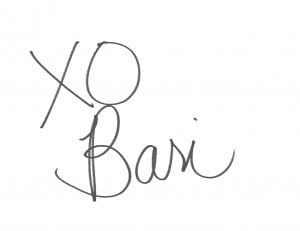
***
An important caveat about trauma:
Trauma comes up, in deep money work, and sometimes speaks all the louder to us when we’re listening to our bodies. (I believe we all carry some level of trauma.) That can be a very good thing: issues rise to the surface to be heard and healed. But some traumas are big — even multi-generational — and we simply can’t face them on our own. It’s important to recognize this. It’s important to know and trust your own limits. And it’s incredibly important to accept support through traumas. Please don’t be cavalier about facing your own traumas, if you have a sense they might be too big to handle on your own. Reach out to a therapist or somatic experiencing therapist for support. It might be the smartest, strongest thing you can do.
Resources to Go Deeper
Books:
Christine Caldwell: Getting Our Bodies Back: Recovery, Healing, and Transformation through Body-Centered Psychotherapy (Christine Caldwell was one of my teachers at Naropa University. Her work on the Moving Cycle, unconscious movement “tags,” and more has been incredibly helpful to me in working with strong emotions, addictions, and trauma.)
Eugene T. Gendlen: Focusing: Want a simple, step-by-step method to focus on your internal sensations? This is a great start.
Peter Levine: Waking the Tiger: Healing Trauma. Peter Levine is the creator of Somatic Experiencing, a school of body-based therapy I’ve been greatly inspired by. This book gives a new model for understanding what trauma is — and how to heal it.
Grow Your Support Team:
Find a Somatic Experiencing Therapist


